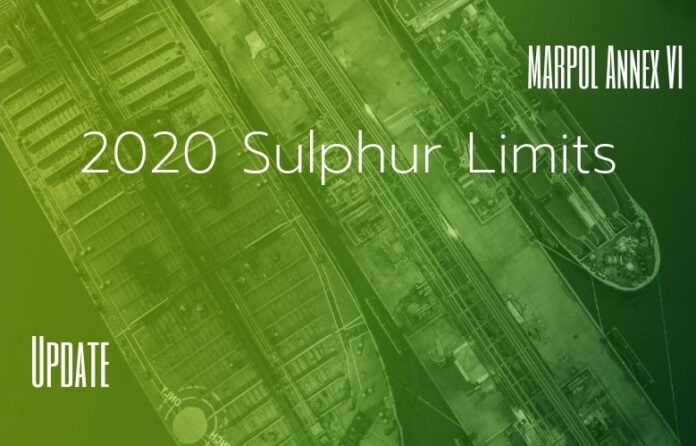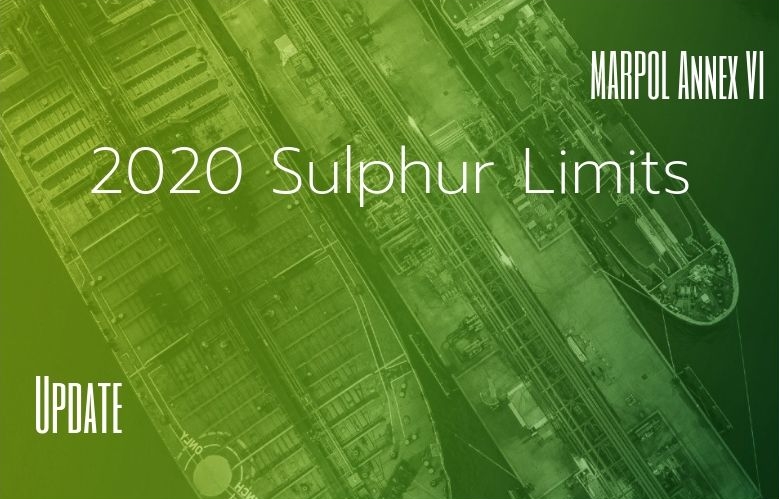
(www.MaritimeCyprus.com) The 74th session of the Marine Environment Protection Committee (MEPC 74) was held at IMO in London on 13–17 May 2019. This was the last MEPC meeting before the 0.50% global sulphur limit takes effect on 1 January 2020, and the focus was on the implementation and completion of guidelines to help stakeholders prepare and ensure consistent implementation. We strongly recommend stakeholders to prepare in due course and update plans according to the latest IMO guidance. This statutory news contains a summary of sulphur-related resolutions and circulars adopted at MEPC 74.
Res. MEPC.320(74) – 2019 Guidelines for consistent implementation of the 0.50% sulphur limit under MARPOL Annex VI
These guidelines are intended for use by Administrations, port states, ship owners, ship builders, and fuel oil suppliers to ensure consistent implementation. The following is addressed:
- Planning for 2020, encouraging the development of ship implementation plans (SIP)
- Impact on fuel and machinery, covering characteristics and challenges with different fuel oil types, technical considerations for ship owners, ISO standard for residual fuels and cylinder lubrication
- Verification issues and control mechanisms, including survey and certification by administrations, control measures by port states, control of fuel oil suppliers, and information sharing
- Fuel oil non-availability, including the FONAR (fuel oil non-availability report) standard reporting format
- Possible safety implications related to fuel oils
Res. MEPC.321(74) – 2019 Guidelines for port state control under MARPOL Annex VI Chapter 3
These guidelines are meant to provide consistency in conducting PSC inspections and to provide guidance to PSC officers on verifying compliance with the various requirements in MARPOL Annex VI. With regards to sulphur, the guidelines have been aligned with other IMO sulphur-related decisions and relevant guidance, including:
- how to follow up a possible discrepancy between the sulphur content on the bunker delivery note and independent test results of commercial samples taken by the ship during bunkering;
- a new appendix, providing guidance to PSC in the case that non-availability of compliant fuel is claimed (FONAR);
- alternative arrangements in the case of EGCS (exhaust gas cleaning system) temporary indication of ongoing compliance in the case of failure of a single monitoring instrument;
- EGCS non-compliance; and
- the carriage ban for non-compliant fuel MEPC.305(73).
MEPC.1/Circ.795/Rev.4 – Unified Interpretations to MARPOL Annex VI
This UI (interprets MARPOL Annex VI, Reg. 14.1) states that the requirement that fuel oil used or carried for use on board a ship not exceed 0.50% should also be applied to the fuel oil of emergency equipment, e.g. lifeboats and emergency generators.
MEPC.1/Circ.864/Rev.1 2019 – Guidelines for on-board sampling for the verification of the sulphur content of the fuel oil used on board ships
Amendment imposing a new retroactive requirement for designating, or if necessary fitting, sampling points to facilitate taking the in-use sample was approved (MARPOL Annex VI, Reg.14).
Ships will be required to designate sampling points no later than the first IAPP renewal survey that occurs 12 months or more after the entry into force of the regulation, expected to be in 2021. The 2019 guidelines for on-board sampling describes how and where the designated sampling points are to be fitted.
MEPC.1/Circ.881 – Notification on early application of the verification procedures for a MARPOL Annex VI fuel oil sample (Regulation 18.8.2 or 14.8)
Amendments to the verification procedures for MARPOL fuel oil samples (MARPOL delivered sample, in-use and on-board samples) were approved (Appendix VI of MARPOL Annex VI). The purpose of the circular is to facilitate the use of the procedure ahead of the entry into force of the amendments in 2021.
MEPC.1/Circ.882 – Guidance for port state control on contingency measures for addressing non-compliant fuel oil
This guidance is meant to address how to deal with all possible instances of non-compliant fuel oil, not only limited to FONAR cases. The following contingency measures are to be considered between ship and port state:
- Actions predetermined in the SIP (if available)
- Discharging non-compliant fuel oil to another ship to be carried as cargo or to an appropriate ship-board or land-based facility, if practicable and available
- Managing the non-compliant fuel oil in accordance with a method acceptable to the port state
- Operational actions, such as modifying sailing or bunkering schedules and/or retention of non-compliant fuel oil, on board the ship. The port state and the ship should consider any safety issues and avoid possible undue delays.
After the non-compliant fuel oil is completely used or discharged, such actions should include the possibility of cleaning and/or flushing through or dilution of remaining residues by using compliant fuel oil with the lowest sulphur content available.
MEPC.1/Circ.883 – Guidance for best practices for member states / coastal states
These best practices are intended to assist member states in carrying out their responsibilities under MARPOL Annex VI, to ensure effective implementation and enforcement without creating any responsibilities beyond what is required in MARPOL. The guidance notes that member states or other relevant authorities desiring to do so may decide to establish or promote a licensing scheme for bunker suppliers.
MEPC.1/Circ.884 – Guidance on indication of ongoing compliance in the case of the failure of a single monitoring instrument, and recommended actions to take if the EGCS fails to meet the provisions of the 2015 EGCS guidelines (MEPC.259(68))
This guidance is meant for ship operators, port states and Administrations on how to address scrubber malfunction, short-term exceedances or interim indications of ongoing compliance in the case of sensor failure.
A system malfunction that cannot be rectified is regarded as an accidental breakdown. The ship should then changeover to compliant fuel oil if the EGCS cannot be put back into a compliant condition within one hour. If the ship does not have compliant fuel oil or a sufficient amount of compliant fuel oil on board, a proposed course of action, in order to bunker compliant fuel oil or carry out repair works, should be communicated to the relevant authorities, including the ship’s administration, for their agreement.
A short-term temporary emission exceedance, typically due to the EGCS dynamic response when there is a sudden change in the exhaust gas flow rate to the EGCS, may not necessarily mean exceedance of emissions and should therefore not be considered as a breach of the requirements. The typical operating conditions that may result in a short-term temporary emission exceedance should be specified by the EGCS manufacturer in the EGCS Technical Manual that is approved at the time the EGCS is certified.
Interim indication of ongoing compliance in the case of sensor failure. All parameters monitored (SO2, CO2, pH, PAH and turbidity) are in a certain interrelation when running on a fuel with a given sulphur level at a constant wash water / engine load ratio. If a single sensor signal starts to deviate and where the other parameters are continuing at normal levels may be an indication that the there is only an instrumentation malfunction rather than non-compliance. In such cases, the ship should keep records of interim indication for demonstrating compliance. This concludes the IMO delivery to ensure consistent implementation of the 0.50% sulphur limit on fuel oil.
Documents previously issued include:
- MEPC.1/Circ.875 – Guidance on best practices for fuel oil purchasers/users for assuring the quality of fuel oil used on board ships
- MEPC.1/Circ.875/Add.1 – Guidance on best practices for fuel oil suppliers for assuring the quality of fuel oil delivered to ships
- MEPC.1/Circ.878 – Guidance on the development of a ship implementation plan for the consistent implementation of the 0.50% sulphur limit under MARPOL Annex VI
- MEPC.1/Circ.880 – Reporting of availability of compliant fuel oils in accordance with Regulation 18.1 of MARPOL Annex VI
Source: DNVGL
For more relevant articled on 2020 Sulphur limits, click here.













